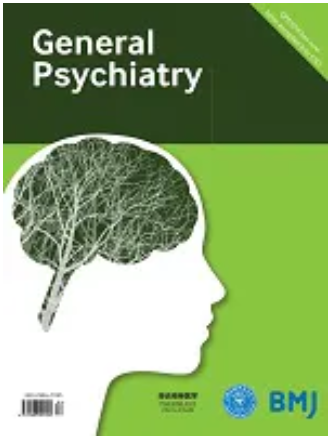过去 24 年印度癌症患者的自杀趋势
IF 5.3
3区 医学
Q1 PSYCHIATRY
引用次数: 0
摘要
自杀是一个重大的全球公共卫生问题,每年夺去 70 多万人的生命。自杀发生在各个年龄组,是 15-29 岁年龄组的第四大死亡原因。据报告,四分之三的自杀发生在低收入和中等收入国家。1 值得注意的是,印度在这一全球负担中占很大比重,据报告,2021 年将有 164 000 人自杀。2 癌症是导致自杀的因素之一。据估计,到 2040 年,印度新发癌症病例将比 2020 年增加 58.3%。在印度,男性最常见的癌症是口腔癌,而乳腺癌则是女性最常见的癌症3。癌症患者通常面临抑郁、焦虑、社会耻辱感、缺乏精神支持、疾病的慢性化、经济负担和痛苦的治疗,所有这些都会严重影响他们的心理健康,并可能导致自杀倾向。研究表明,与普通人群相比,癌症患者的自杀风险要高得多。4 然而,人们对癌症患者所面临的社会心理挑战仍然缺乏足够的了解。研究这些趋势将有助于深入了解这一特殊人群自杀风险的复杂性。本研究的目的是根据二手数据了解印度癌症患者自杀死亡的趋势。研究人员从国家犯罪记录局(National Crime Records Bureau)提取了 1997 年至 2020 年期间癌症患者的自杀人数,以及各邦和各性别的自杀数据。从世界银行的数据中收集了同年的全国人口估计数。每年全国癌症患者自杀人数的估算值是由美国国家犯罪记录局(National Crime Records Bureau)提供的。本文章由计算机程序翻译,如有差异,请以英文原文为准。
Suicide trends among patients with cancer in India over the past 24 years
Suicide is a significant global public health concern, claiming over 0.7 million lives annually. It is seen in all age groups and is the fourth leading cause of mortality in the 15–29 year old age group. Three-quarters of suicides are reported in low-income and middle-income countries.1 Notably, India significantly contributes to this global burden, reporting 164 000 suicides in 2021.2 Cancer is one of the factors leading to suicide. In India, new cancer cases are estimated to increase by 58.3% by 2040 compared with 2020. The most common cancer among males in India is oral cancer, while breast cancer ranks as the most common type of cancer among females.3 A cancer diagnosis can lead to severe mental and physical distress, raising the likelihood of suicide. Patients with cancer commonly face depression, anxiety, social stigma, lack of moral support, the chronic nature of the illness, financial burden and painful treatment, all of which significantly impact their mental health and can lead to suicidal tendencies. Research indicates that the risk of suicide is significantly greater among those affected by cancer compared with the general population.4 However, the psychosocial challenges of patients with cancer remain insufficiently explored.5 6 In particular, there is limited research on recent suicide trends among patients with cancer in India. Studying these trends will provide insights into the complexities of suicide risk in this specific population. The aim of the study was to find trends of suicidal deaths among individuals with cancer in the Indian population based on secondary data. The number of suicides among patients with cancer from 1997 to 2020 was extracted from the National Crime Records Bureau, along with state-specific and gender-specific suicide data. National population estimates for the same years were collected from World Bank data. The yearly estimate of nationwide cancer …
求助全文
通过发布文献求助,成功后即可免费获取论文全文。
去求助
来源期刊

General Psychiatry
医学-精神病学
CiteScore
21.90
自引率
2.50%
发文量
848
期刊介绍:
General Psychiatry (GPSYCH), an open-access journal established in 1959, has been a pioneer in disseminating leading psychiatry research. Addressing a global audience of psychiatrists and mental health professionals, the journal covers diverse topics and publishes original research, systematic reviews, meta-analyses, forums on topical issues, case reports, research methods in psychiatry, and a distinctive section on 'Biostatistics in Psychiatry'. The scope includes original articles on basic research, clinical research, community-based studies, and ecological studies, encompassing a broad spectrum of psychiatric interests.
 求助内容:
求助内容: 应助结果提醒方式:
应助结果提醒方式:


